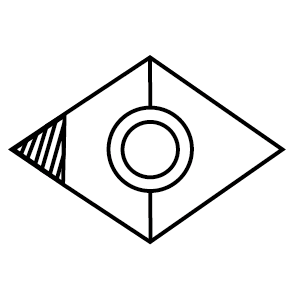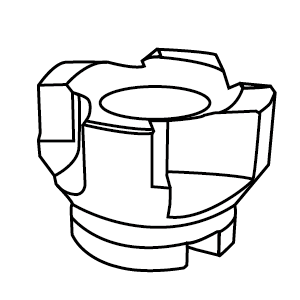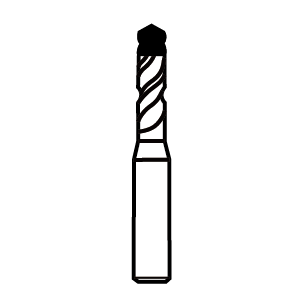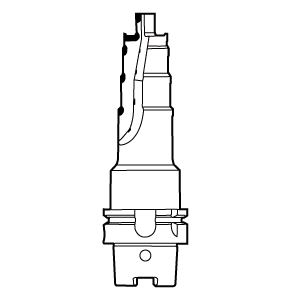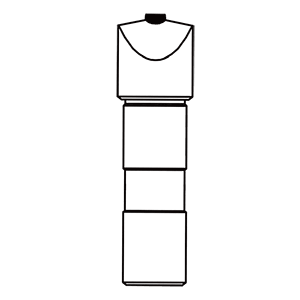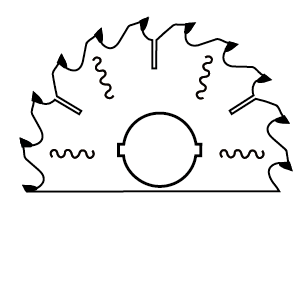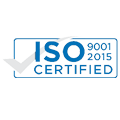Any Difference Between Ceramic Inserts and CBN Inserts for Hardened Steel
What's the Difference Between Drilling, Boring, and Reaming?
Precision machining is a world of finesse and exactitude, and three key processes stand at the forefront: drilling, boring, and reaming. Each of these techniques serves a distinct purpose, and understanding their differences is crucial for achieving precision in machining. In this detailed guide, we will unravel the mysteries behind drilling, boring, and reaming, shedding light on their applications, advantages, and when to use each method.
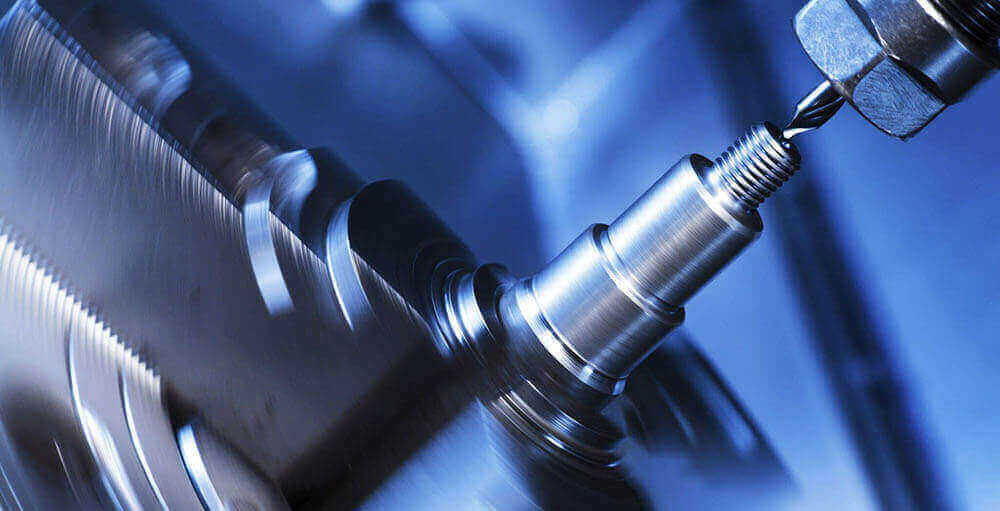
Drilling
Drilling is the foundational process of creating holes in materials using a rotating cutting tool, typically a drill bit. The primary objective of drilling is to generate round holes quickly and efficiently. It’s often the starting point in many machining operations.
- Drilling involves a straightforward, axial motion to create holes with minimal tolerances.
- It’s suitable for general hole-making tasks, including creating pilot holes or through holes.
- Drilling may leave a less precise finish and is typically used for operations where high precision is not critical.
-Variations in Drilling
Drilling, as a machining process, comes in several variations, each tailored to specific requirements and materials:
- Twist Drilling: Twist drills are the most common and versatile tools for creating holes. They have spiral flutes and are widely used in various materials, including metal, wood, and plastic.
- Deep Hole Drilling: Deep hole drilling, as the name suggests, is employed when exceptionally deep holes are required. This technique often involves specialized tools and coolant systems to manage the heat generated during the process.
- Gun Drilling: Gun drilling is a precision drilling method commonly used in the production of firearm barrels and other industries where straight and deep holes are necessary.
- Trepanning: Trepanning is a variation of drilling used to create large-diameter holes. It involves removing a core or plug from the center of the hole, leaving a cylindrical sidewall.
-What are the Applications of Drilling?
Drilling plays a pivotal role in numerous industries and applications, including:
- Manufacturing: In manufacturing, drilling is essential for producing holes in various components, from engine blocks in automotive manufacturing to precision parts in aerospace.
- Woodworking: Woodworkers rely on drilling to create holes for dowels, screws, and other joinery techniques, ensuring accurate and strong connections in furniture and cabinetry.
- Metal Fabrication: In metal fabrication, drilling is employed for structural steelwork, pipelines, and many other applications where holes are needed for fasteners or passageways.
- Automotive Industry: In the automotive sector, drilling is used to create holes in engine blocks, transmission components, and other critical parts to exact specifications.
- Electronics: Precision drilling is vital in the electronics industry, particularly in the creation of printed circuit boards (PCBs) and microelectronics.
-Drilling Advancements:
The world of drilling has witnessed significant technological advancements, leading to improved efficiency, accuracy, and sustainability.
Some of the key innovations include:
- CNC Drilling: Computer Numerical Control (CNC) technology has revolutionized drilling processes, enabling precise and automated hole creation in a wide range of materials.
- High-Speed Drilling: Advances in cutting tool materials and design have facilitated high-speed drilling, reducing production time and enhancing precision.
- Eco-Friendly Drilling: Sustainable drilling practices, such as through-coolant technology and minimal lubrication techniques, have reduced environmental impacts.
- Non-contact Measurement: The integration of non-contact measurement systems allows real-time monitoring and adjustments during the drilling process to ensure accuracy.
Boring
Boring is a precision machining process used to enlarge, refine, or reshape existing holes. It plays a crucial role in industries where hole diameter and concentricity are critical factors.
- Boring utilizes a single-point cutting tool to achieve precision.
- It’s commonly employed in situations where existing holes need improvement, such as achieving exact dimensions or creating a perfectly concentric hole.
- Boring is known for its precision, tight tolerances, excellent roundness, and superior surface finish, making it the preferred choice when existing holes need improvement.Boring delivers superior precision compared to drilling but is more time-consuming.
-How Boring Works:
- Single-Point Cutting Tool: Boring employs a single-point cutting tool, often called a boring bar or head, to remove material and improve the dimensions of an existing hole.
- Rotary Motion: The boring tool rotates, while the workpiece remains stationary or rotates at a slower speed. This rotational movement allows the tool to cut into the material.
-What are the Applications of Boring?
Boring is essential in a wide range of industries and applications, including:
- Aerospace: In aerospace manufacturing, boring is used to create precise holes for aircraft components and engine parts, ensuring safety and performance.
- Automotive: The automotive industry relies on boring for engine cylinders and transmission components, achieving optimal dimensions and minimizing friction.
- Medical Devices: Boring plays a critical role in medical device manufacturing, ensuring precise holes in components like surgical instruments and implants.
- Oil and Gas: The oil and gas sector uses boring in the creation of wellbores and casings to access and extract natural resources efficiently.
- Tool and Die Making: Boring is vital in tool and die production, providing the accuracy needed for high-precision molds and components.
- Hydraulics and Pneumatics: In hydraulic and pneumatic systems, boring ensures that cylinders and valves have the exact tolerances for efficient operation.
-Boring Advancements:
Technological advancements have propelled boring to new heights, making it even more precise and efficient:
- Digital Control: The integration of Computer Numerical Control (CNC) technology has brought digital precision to boring, allowing for automated, repeatable, and highly accurate operations.
- Advanced Tool Materials: Cutting tool materials have evolved to enhance tool life and reduce wear, enabling more extended machining runs.
- Vibration Dampening: Innovations in machine design and tool holders have reduced vibration, leading to improved surface finish and extended tool life.
- Boring on a Micro Scale: Advancements have allowed for micro-boring, enabling precise hole creation in tiny components used in electronics and medical devices.
Reaming
Reaming is the pinnacle of precision hole-making. It’s used to enhance the accuracy and finish of holes that have already been drilled or bored. Reaming imparts a high-quality surface finish and tight tolerances.
-How Reaming Works:
- Multiple-Edge Cutting Tool: Reaming uses a cutting tool called a reamer, which has multiple cutting edges. This tool is introduced into an existing hole to refine its dimensions.
- Superior Accuracy: Reaming delivers exceptional precision, ensuring that the hole’s dimensions and surface finish meet tight tolerances. It imparts a high-quality, smooth, and polished surface to the hole.
- Final Step in Precision: Reaming is often the final step in achieving the desired hole specifications, especially in applications where impeccable accuracy is paramount, such as aerospace components or medical instruments.
-What are the Applications of Reaming?
Reaming is used in various industries where precision is critical, including:
- Aerospace: In aerospace manufacturing, reaming is essential for creating holes in components like aircraft engine parts and structural elements to ensure safety and performance.
- Medical Instruments: Reaming is employed to create precise holes in surgical instruments, dental implants, and other medical devices where accuracy is vital.
- Automotive: The automotive industry relies on reaming for engine components, transmission parts, and other critical elements to minimize friction and improve performance.
- Firearms: In the production of firearms, reaming ensures that barrels and other components meet exact specifications for accuracy and safety.
- Oil and Gas: Reaming is used in the oil and gas sector for wellbore construction and casing to access and extract resources efficiently and safely.
-Reaming Advancements:
Reaming has evolved with technological advancements, making it even more precise and efficient:
- Advanced Reamer Designs: Reamers now come in a variety of designs and coatings, tailored to different materials and applications, allowing for improved performance and extended tool life.
- CNC Precision: The integration of Computer Numerical Control (CNC) technology has brought digital precision to reaming, ensuring automated and highly accurate operations.
- Customized Reaming Solutions: Manufacturers now offer customized reaming solutions to meet specific project requirements, allowing for greater flexibility and precision.
- Lubrication and Cooling: Innovations in lubrication and cooling techniques have reduced heat and friction during reaming, resulting in better surface finish and prolonged tool life.
Optimizing Each Technique
To use these techniques effectively, it’s crucial to optimize the speed, feed, and tool selection based on the specific requirements of the task at hand.
- Drilling Optimization: Use higher speeds for softer materials like aluminum and slower speeds for harder materials like stainless steel. Adjust the feed rate to prevent overheating and ensure hole quality.
- Boring Optimization: Select the right boring tool and adjust the feed rate for precise hole enlargement. Ensure the workpiece is rigid to minimize vibrations.
- Reaming Optimization: Calculate and optimize speeds and feeds for reaming, considering the material and desired finish. Use appropriate lubrication to reduce friction and heat generation.
FAQs
Q: What is the main difference between drilling and reaming?
A: Drilling creates basic holes quickly, while reaming refines existing holes for precision. Reaming imparts exceptional roundness and finish compared to drilling.
Q: When is boring used in machining?
A: Boring is employed when existing holes need improvement, especially for achieving exact dimensions or creating perfectly concentric holes.
Q: What are the advantages of using carbide reamers?
A: Carbide reamers offer exceptional hardness and wear resistance, making them ideal for machining hard and abrasive materials. They provide superior tool life and reliability.
Q: Why is optimizing speeds and feeds crucial in machining?
A: Optimizing speeds and feeds ensures that the tool operates at its most efficient, preventing overheating, and tool wear, and delivering precision results.
Q: Can I use a reamer set for various tasks in precision machining?
A: Yes, reamer sets are versatile and allow you to select the right reamer from the set to match specific project requirements, making them a valuable asset in precision machining.
Q: Which technique is best for achieving a high-quality surface finish in precision machining?
A: Reaming is the technique of choice for achieving a high-quality surface finish and tight tolerances in precision machining.
In the realm of precision machining, the distinctions between drilling, boring, and reaming are crucial for achieving the desired results. Each technique has its specific applications and advantages, and optimizing their use is paramount for precision. Whether you’re creating basic holes, enlarging existing ones, or seeking the pinnacle of accuracy, understanding these differences is key to success in machining. By choosing the right technique for the job and applying optimization strategies, you can consistently achieve precision in your machining projects.

